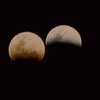Featured
The Photon Ring: An Illumination of Spacetime,
at
John Templeton Foundation | Conshohocken, Pennsylvania,
Wednesday, February 21, 2024
Stories from the Eclipse
The Black Hole Explorer: using the photon ring to visualize spacetime around the black hole,
at
Space Telescopes and Instrumentation 2024: Optical, Infrared, and Millimeter Wave | Yokohama, Japan,
Thursday, June 20, 2024
Who gets to record, experiment, interpret, speculate, discover? (Keynote),
at
Photographs from Outer Space: A Female Archaelogy of Image-Data | University of Milan,
Wednesday, December 13, 2023
Time: Physics, Film, History,
at
Nauenberg History of Science Lecture | UC Santa Cruz,
Thursday, April 18, 2024
Contested Visibilities of the Anthropocene (Keynote),
at
Forms of Environmentalization | Columbia University Graduate School of Architecture, Planning and Preservation,
Friday, April 5, 2024
No More, America, 2017.
. “I. How Experiments End: Three Case Studies of the Interaction of Experiment and Theory in Twentieth-Century Physics; II. Large Weak Isospin and the W Mass.” History of Science (I); Physics (II), 1983.
. “Aufbau/Bauhaus: Logical Positivism and Architectural Modernism.” Critical Inquiry 16, no. 4 (1990): 709-752.
. “Big STEM collaborations should include humanities and social science.” Nature Human Behaviour (2023). Read on Nature.com
. Black Holes | The Edge of All We Know. USA, 2020. Watch on Netflix
. Dream of a Shadow. USA, 2023. Watch on Labocine
. Invisibilities: Seeing and Unseeing the Anthropocene. Zone Books, Submitted.






